Fly Fishing Tips for Stocked Trout
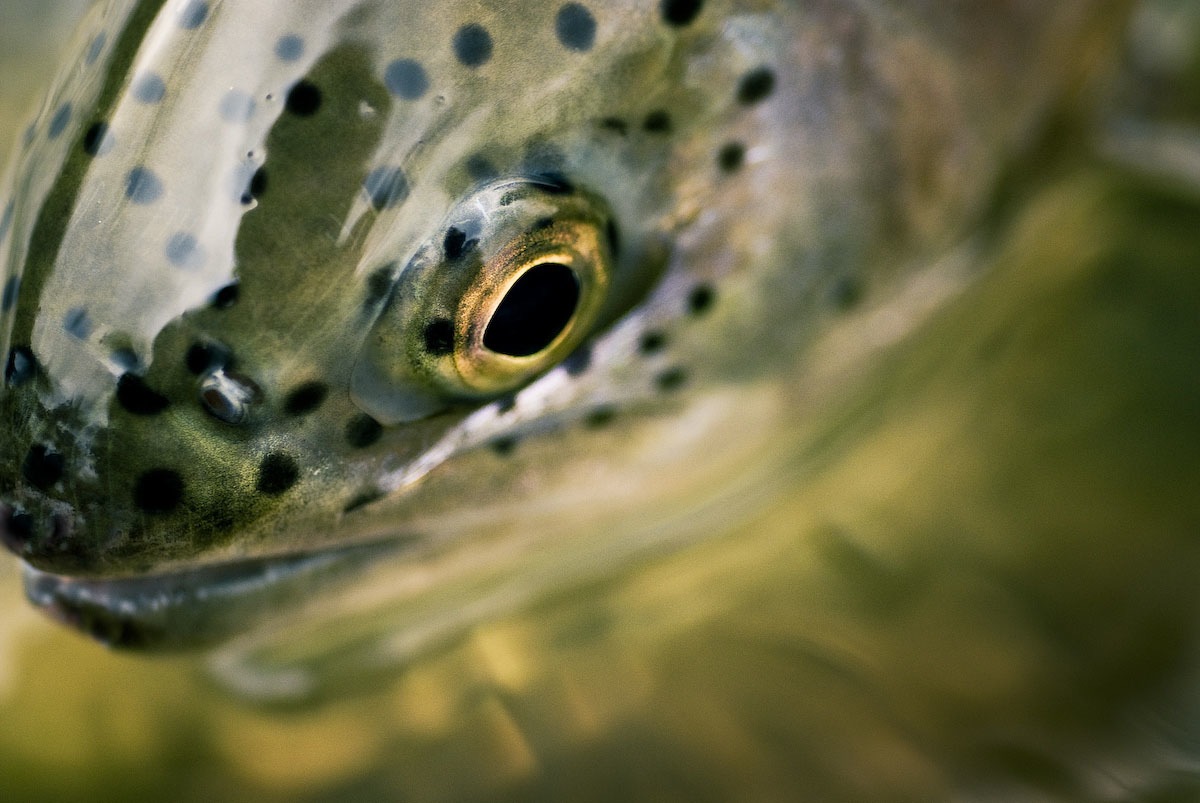
My first memory of bringing a trout to hand with a fly rod took place back in the spring of 1990, on a seasonal trout stream, located 45 minutes north of Atlanta, GA. It was a far cry from a trophy trout at 10-inches, but that freshly stocked rainbow trout, touched my eleven year old fishing soul to the core. I’ll never forget the excitement I felt watching that stocker chase down and eat my olive woolly bugger at my feet. It felt really good for a change, not relying on that plastic blue can of worms to get the job done. From that day forward, I never looked back, and I’ve moved on to become a respectable trout guide in my area and I’ve fly fished for trout all over the world.
A lot of fly fisherman would laugh at me if I brought that fishing memory up in conversation. Many wouldn’t be able to look past the fact that I was fly fishing for stocked trout that weren’t naturally born in a stream or river. If you happen to be reading this post and you’re one of those fly anglers that I’m referring to, just remember that we aren’t all blessed to have easy access to wild trout. For many of us, wild trout populations are so low (because of poor conservation and land management), it’s not even feasible for us to strategically target them, and if it wasn’t for stocked trout, we’d have no trout at all. If you’re fortunate to be blessed with wild trout populations where you live, don’t forget how that special that is, and please don’t make fun or belittle others who take pride in catching stocked trout. You just make yourself look ungrateful and worthy of having wild trout.
Before I get into my fly fishing tips for stocked trout, I’d like to take a moment to mention a couple of reasons I feel stocked fisheries can be good for the sport. For one, they’re a great place to introduce kids and newcomers to fly fishing for trout. Timed correctly, an angler with zero experience can have great success catching trout. Secondly, put and take trout waters provide great locations for anglers who like to harvest trout, to do so without having to illegally poach on special regulation or wild trout fisheries.
Read More »Tim Rajeff’s Double Haul Master Class
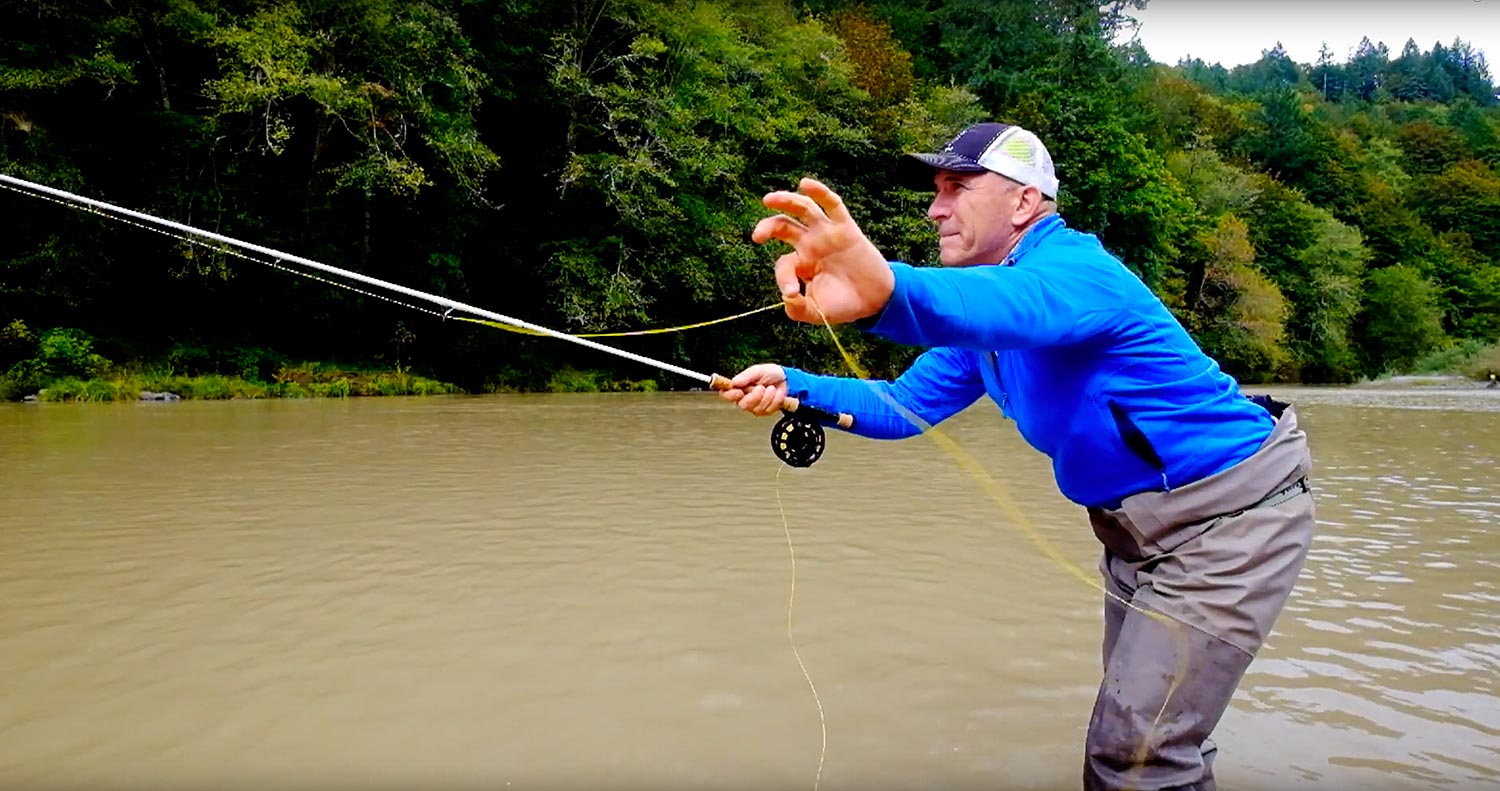
This video can teach you to fly cast and double haul like a pro.
When I asked Tim Rajeff for some tips on the double haul, I got way more than I expected. In just under 4 minutes Tim gave the best presentation I’ve ever seen on fly casting. If you want to improve your fly casting, get more distance and control and cast like a rockstar, take a few minutes to watch this video.
VIDEO TIPS ON THE DOUBLE HAUL FROM TIM RAJEFF
Read More »Sacred Fishing Holes
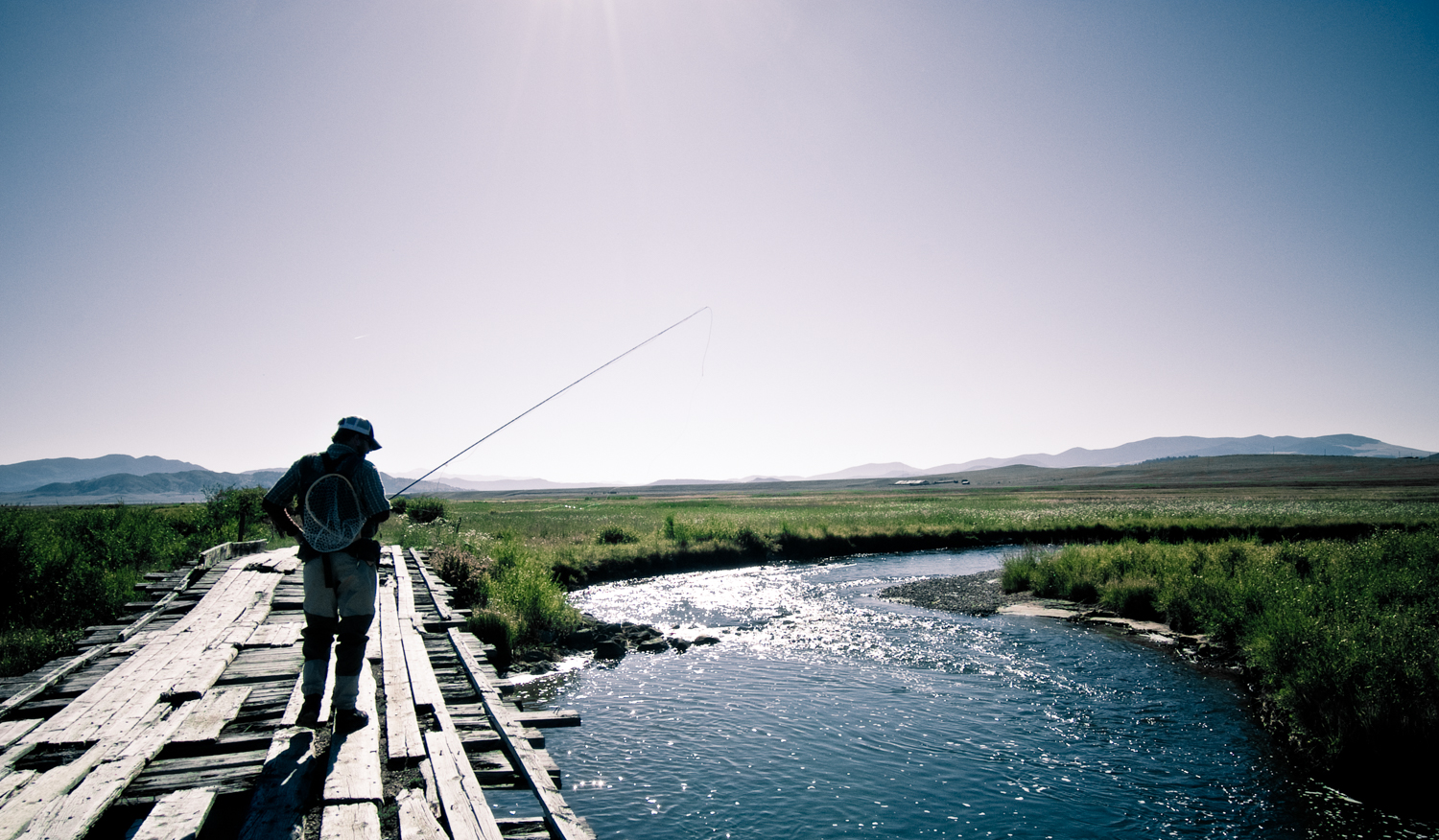
By Alice Tesar
It might have been the coyotes that kept me awake the night prior.
More likely it was thoughts about the section of river we planned to visit that day. I’d heard a lot about the spot and debated it’s worthiness. I had heard that those who wander this stretch of river alone rarely find success, that it was imperative to partner fish, where one person spots the fish from a vantage point and the other casts from the hole below or further down river from the bank. My fishing partner had fished here many times and I was forced to swear secrecy.
“Don’t tell anyone about this spot you wouldn’t mind running into out there,” he told me.
The cool wet morning was filled with anticipation — I sipped my coffee and watched the sunlight peeking over land making everything shimmer. After loading up the truck, my fishing partner and I drove down the dirt road to the river. Pulling off at a nondescript field, we rigged up, took a swig of Fireball (hair of the dog), and hopped the fence startling the nearby grazing cattle. Off to a remote bend in the river we went.
We stumbled through the lumpy pasture to the river, where a drop created by a large fallen cottonwood made a deep pool in the otherwise shallow river. Standing far back on the shore, careful not to scare off any feeding trout in the pool, I cast in.
My indicator drifted along to a tangle of sticks that had accumulated where the river shallowed. Releasing the snagged fly proved difficult without disturbing the water and I feared I’d ruined our chances of catching anything in this hole. A few more casts and my bright orange indicator sunk fast and hard.
Read More »Get Rid of Those Pesky Snags!
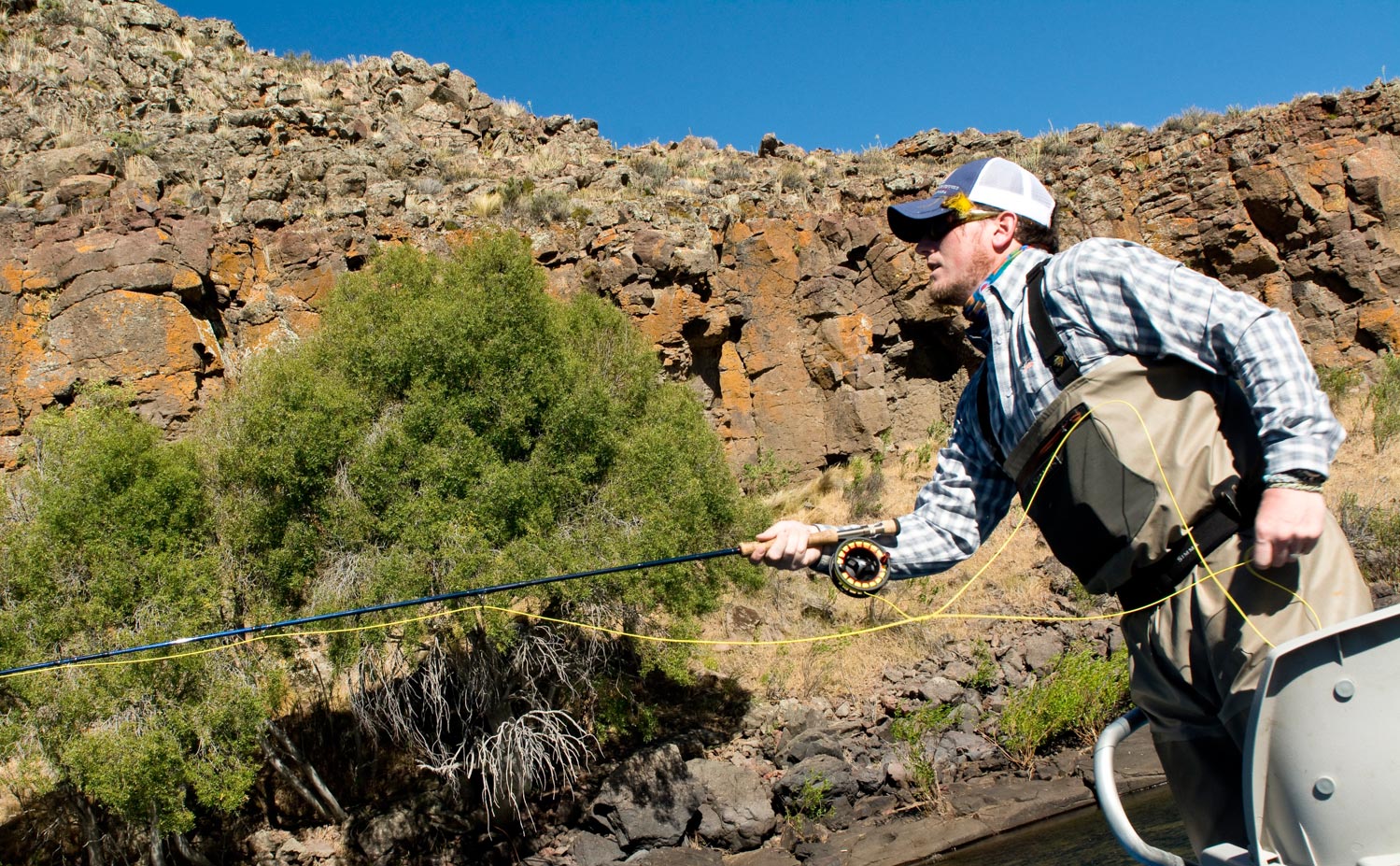
By Justin Pickett
IT’S JUST AFTER SUNRISE AND YOU’VE RUN FIFTEEN MINUTES.
From the boat ramp to the spot where you had previously gathered intel on where the stripers had been slamming schools of bait. There’s a short window though, so you’ve hurried to make sure you’re there when it all goes down. If you miss your shot, then it’s back to the truck with nothing to show for your morning’s efforts.
Your rods are strung up. Flies tied on. Knots checked. Drags are set.
As you work around a point and into one of the fingers of the lake you see the surface boiling. Stripers are crashing on bait with reckless abandon. As you reach the school you jump on the deck and grab your rod, stripping the line from your reel like a crazed lunatic. You make two false casts, slipping line each time, and on the third forward stroke you complete an epic double-haul. An awesomely tight loop speeds past you with your leader and fly in tow…. And then comes to a screeching halt and smacks down in the water, forty feet short of the feeding frenzy. Doh! (Raise dominant hand and accelerate palm towards forehead).
Those damn fly line trolls!
They like to gather up all of your loose fly line while you’re not looking and wrap it around things like coolers, seats, trolling motors, pliers, cleats, bags, straps, beer cans, puppies, etc, etc, etc. They have no mercy!!!
This has probably happened to every one of us in varying scenarios, and if for some reason it hasn’t happened to you, don’t worry, it will. Fly line has the uncanny ability to find things to get itself tangled up in. And believe me it will happen in a most critical moment if you’re not prepared to prevent it from happening.
Whether you are
Read More »Why You Should Invest In Your Casting
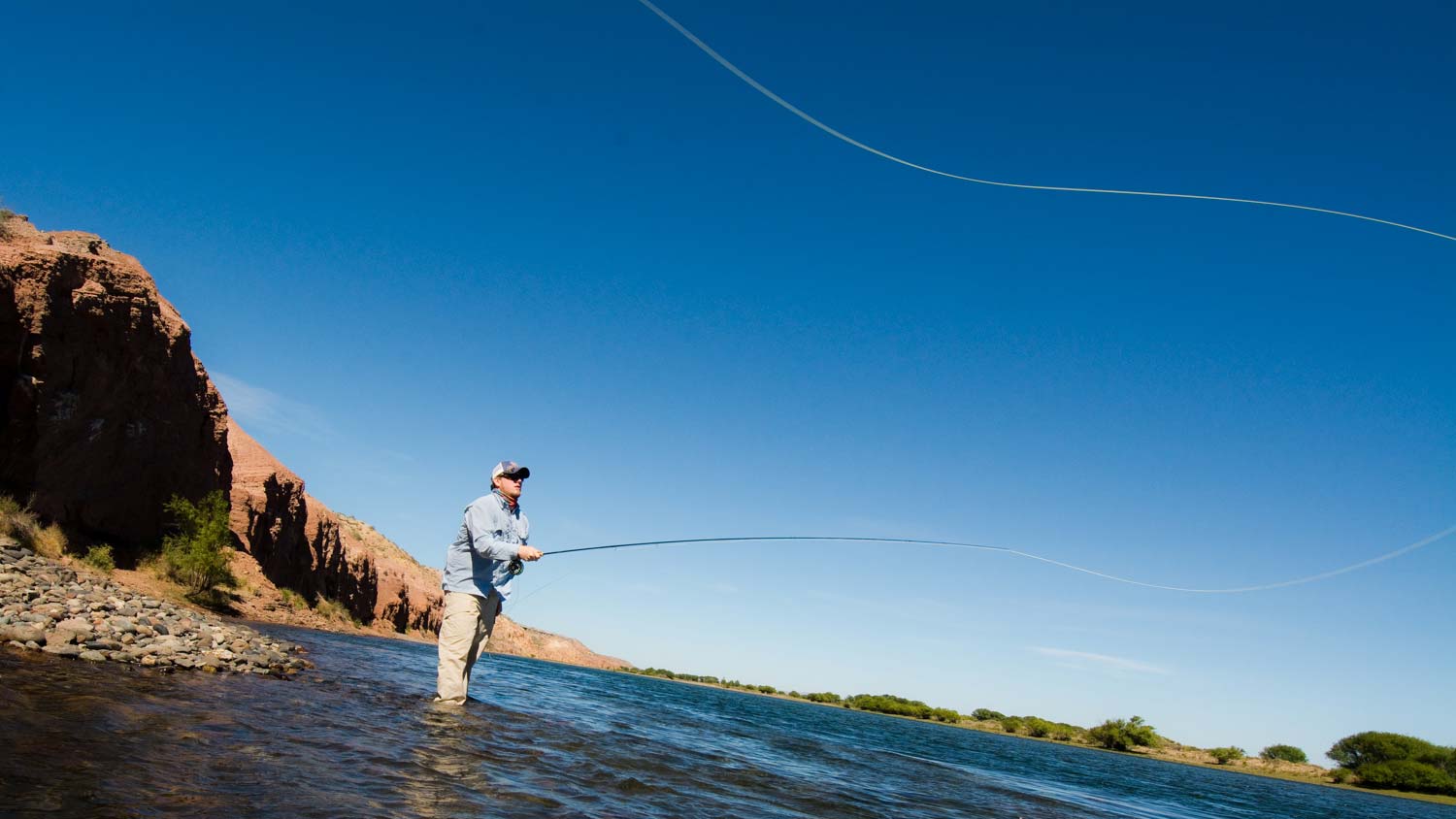
By Justin Pickett
I have never met anyone who could pick up a five-weight fly rod and make consistent, accurate fifty-foot casts without ever having prior experience with fly casting.
I used to play a ton of golf. So much so that at one point, much earlier in my youth, I could hold my own on any given course and typically shoot Par. Nothing to really brag on, but I wasn’t bad. During my time around golf courses, I never met anyone who could walk up to the 1st tee on any given course and drive the golf ball 300yds down the middle of the fairway without ever having swung a golf club before. It takes a considerable amount of learning and practice to develop the skills needed to be able to hit a golf ball with accuracy, control, and distance. And then there are the many other skills, such as putting, chipping, and bunker shots, requiring different strokes, techniques, and timing that must be practiced in order to put an entire round of eighteen holes together. For the vast majority, it’s a large investment in one’s time and effort to become a decent golfer and get the most enjoyment out of your day on the course. On a side note, I have also yet to meet anyone who enjoys looking for golf balls in the woods all day.
I have been fly fishing since the young age of ten. In my thirty-something years, I have fished way more than I ever golfed, and I have to say that I have never met anyone who could pick up a five-weight fly rod and make consistent, accurate fifty-foot casts without having prior experience with fly casting or fly fishing. Just like with golf, it takes a considerable amount of learning and practice to develop the skills needed to be able to consistently complete an accurate fly cast of any distance. Throw in roll casts, water hauls, the double haul, and reach casts and it’s starting to get a little overwhelming for the beginning angler. We haven’t even begun to talk about all the other little pieces, such as mending, hookset, fish fighting, etc. It’s a lot of info and a lot of factors that have to all come together fluidly for the angler to successfully bring fish to hand on a consistent basis, which adds to the enjoyment of our time spent on the water.
I wanted to place a focus on casting, though, because it is the first skill we need to learn in order to place a fly effectively in or on the water, and it is
Read More »Not Today
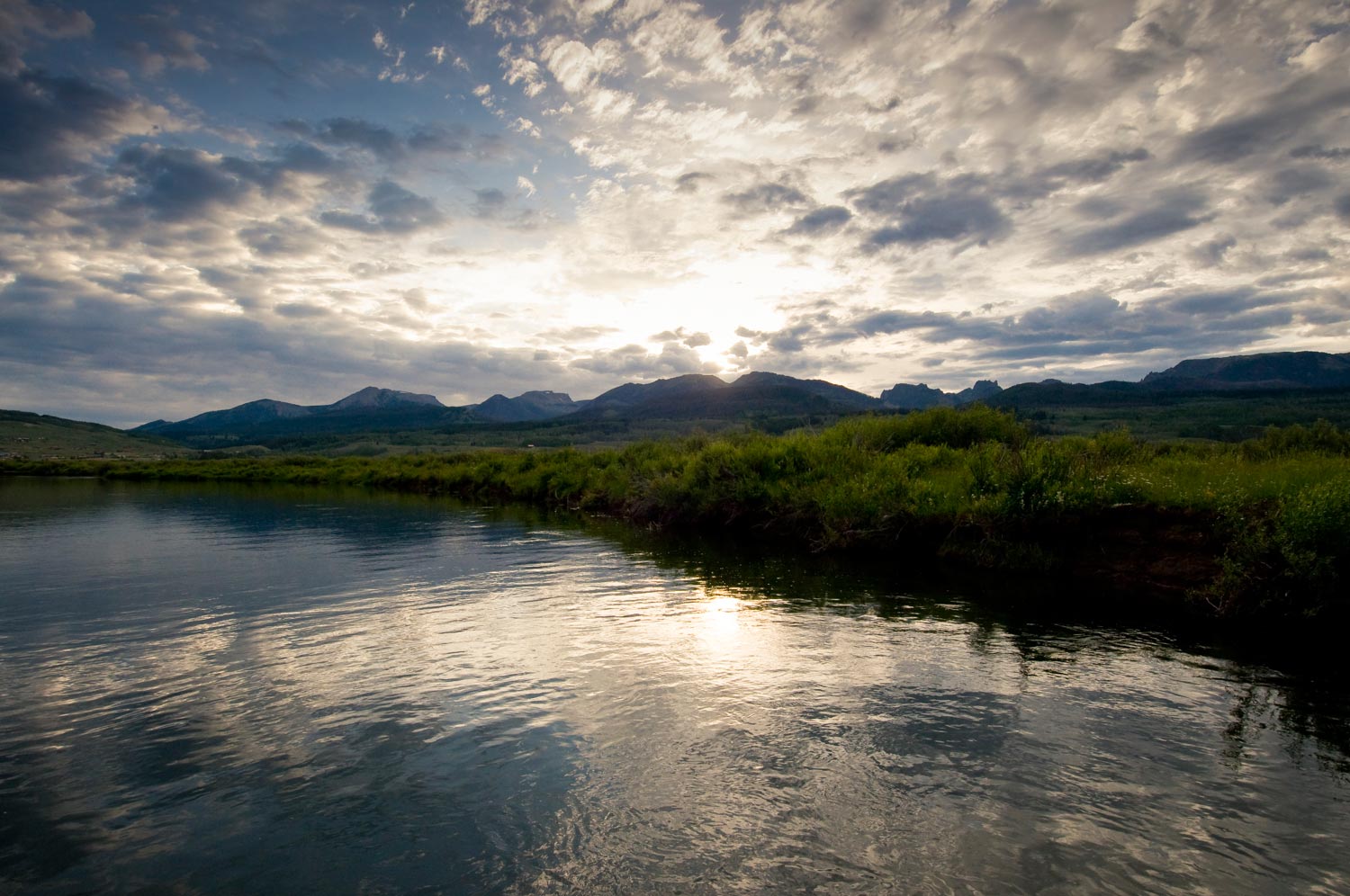
“WHEN I SAY I LOVE TO FISH, THAT’S THE KIND OF LOVE I’M TALKING ABOUT. THE KIND OF LOVE THAT COMES WITH PAIN AND STRUGGLE AND DEATH. THE KIND OF LOVE YOU EVENTUALLY WISH YOU HAD NEVER KNOWN.”
The night sky is just opening its eyes. The first bright pin pricks in the cold blue firmament slowly twinkling to life. Like shining snowflakes falling on a glass dome they multiply, forming a blanket of heavenly light over the Wind Range.
There is no moon. The only real light is coming from the last sliver of white along the horizon. The sage brush fades from dusty green to black and the ribbon of pale dirt road that stretches as far as I can see, both ahead and behind, takes on an eerie glow. I feel the first bite of night air and hear the rustlings of nature’s second shift punching the clock. It’s a beautiful Wyoming twilight.
I’m twenty miles, if I have my bearings, from the nearest paved road, a few more to the nearest house. Thirty miles from the nearest cell tower or tandem truck moaning down the highway. Fifty miles from the nearest town. This is what I love, the kind of thing I live for, work for, go way out of my way for. To be alone under the night sky with a trout stream near by and the promise of another day. A perfect ending, to any other day.
Read More »The World’s Best Blood Knot
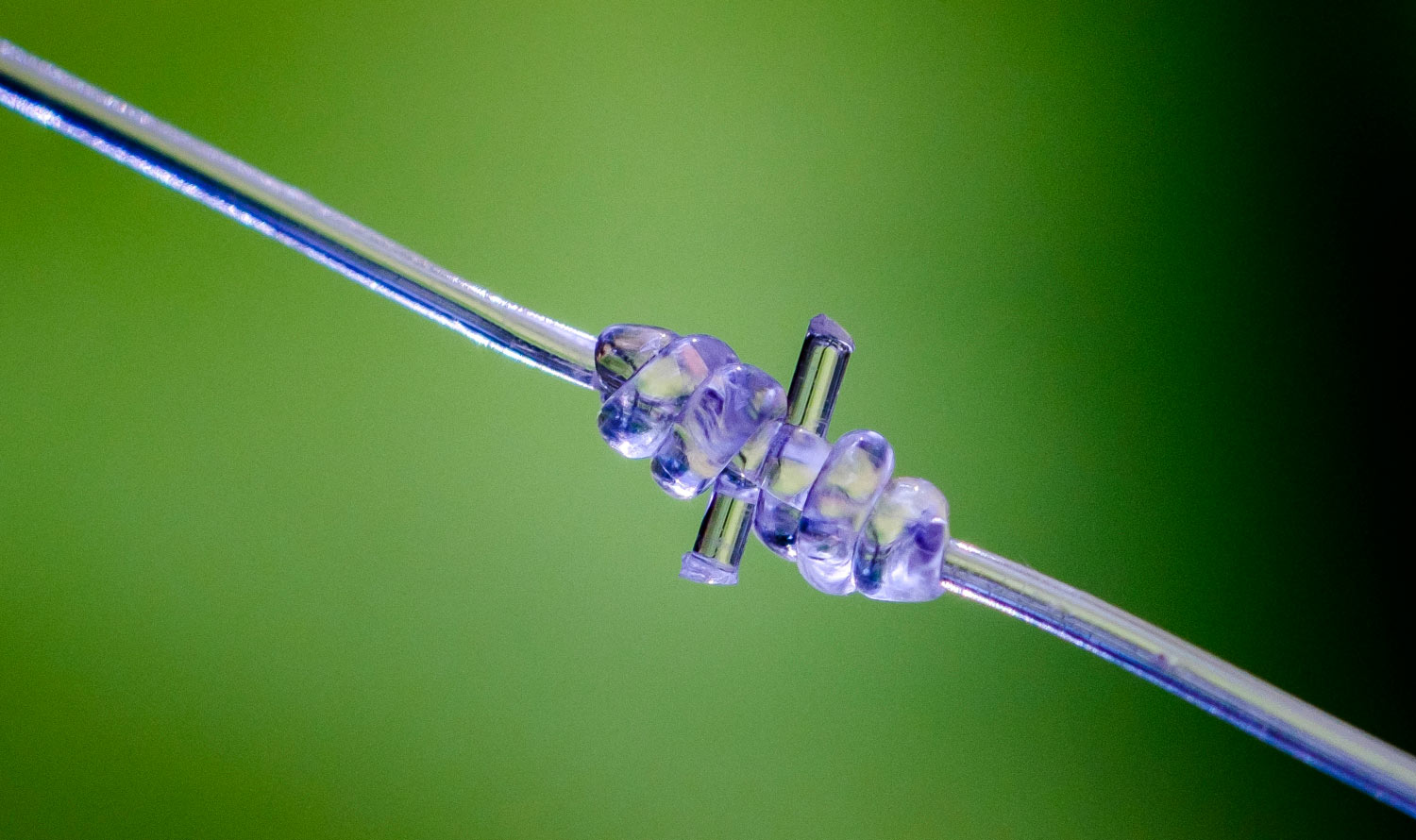
Chris Fave ties a lot of blood knots. About half a million a year.
You’d expect him to have a trick or two up his sleeve. I saw this video he put on Facebook and immediately asked him if I could share it. Chris uses a toothpick to tie a blood knot perfectly in seconds. It’s a pretty sweet trick.
Chris’s hand tied leaders are available in fly shops or on his site. He has tapers for every ovation. Check them out HERE. Thanks for sharing Chris!
WATCH THIS VIDEO AND LEARN TO TIE THE WORLD’S BEST BLOOD KNOT!
Read More »Bonefishing: Getting Ready To Fish

It’s time to catch a bonefish! Here are some easy steps you can follow to set you up for success.
Effective saltwater fly fishing, for bonefish or any other species, is all about making clean presentations. The more you can control the variables, the more fish you will catch. It’s as simple as that. An angler who is methodical and pays attention to the details always has the odds in their favor.
In this video I share with you the steps I take to insure a clean presentation every time I take the bow. It’s a deeper dive into how I prepare for success and why. I hope it helps you catch more bonefish.
BONEFISHING: GETTING READY TO FISH
Read More »The Bow Clock
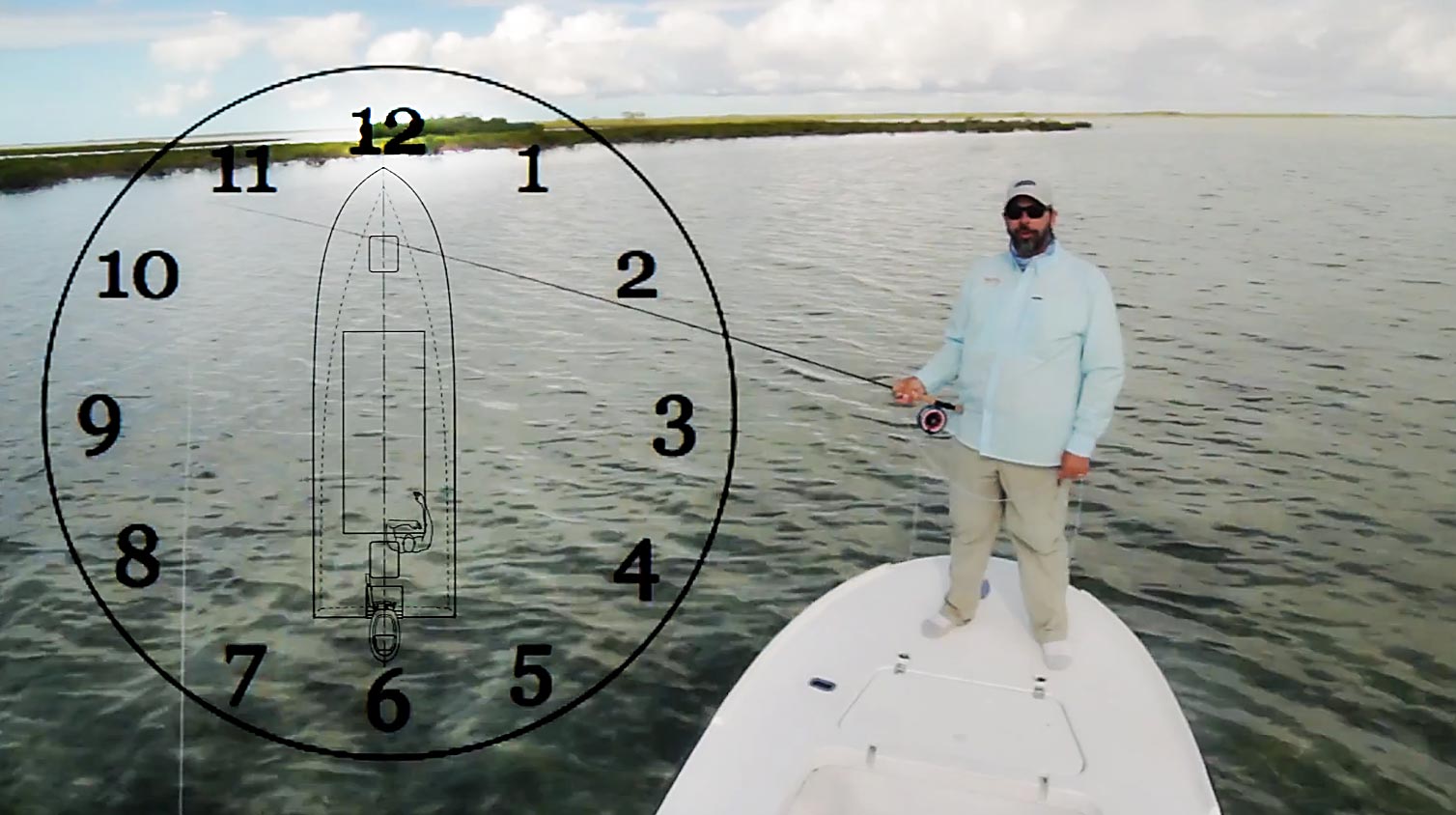
If you can’t communicate with your guide, you’re fishing blind.
Communication is the key to successful saltwater fly fishing. Flats fishing with a guide is a team sport, and like all team sports, The team must work together to win. Your guide has a couple of big advantages, when it comes to spotting fish. He has keen eyes, years of experience and an elevated position on the platform. More times that not, he will see fish long before you do.
Once he has found the fish, it’s his job to help you find them. Your odds of making the right presentation go way up when you can see the fish, so the two of you need to be speaking the same language. Poor communication means missed opportunities.
To help you find fish, your guide will use a system called the Bow Clock. He should give you 3 pieces of information. A Bow Clock time, which tells you in what direction to look. A distance, which tells you how far to look. And the direction the fish is moving– left, right, toward or away. These 3 coordinates should tell you everything you need to know to find the fish and make the shot.
Keep in mind that things look very different from the platform than they do from the bow. What looks like 40 feet to you may look like 30 to your guide. Don’t stare a hole in the water where you think the fish is. Scan the surrounding water for movement and color changes. Point your rod so your guide knows where you’re looking, and can direct you. If he skips one of the 3 pieces of information, ask. “Moving which direction?”
When everyone is on the same page the system works great. Watch this video for more information and to see exactly how it works.
Read More »Fly Fishing Tips for Stocked Trout

My first memory of bringing a trout to hand with a fly rod took place back in the spring of 1990, on a seasonal trout stream, located 45 minutes north of Atlanta, GA. It was a far cry from a trophy trout at 10-inches, but that freshly stocked rainbow trout, touched my eleven year old fishing soul to the core. I’ll never forget the excitement I felt watching that stocker chase down and eat my olive woolly bugger at my feet. It felt really good for a change, not relying on that plastic blue can of worms to get the job done. From that day forward, I never looked back, and I’ve moved on to become a respectable trout guide in my area and I’ve fly fished for trout all over the world.
Read More »